Excellence, precision, and output continue to be perpetual pursuits in the ever-evolving domain of manufacturing. Laser welding robots and welding turntables have emerged as game-changing technologies in this context. Not solely are these developments causing a paradigm shift in the field of welding, but they are also redefining the limits of competence in production processes across the globe.
The Ascent of Robotic Laser Welding
A significant progression in automation technology was undertaken with the integration of laser welding robots into the manufacturing sector. Attaining superior quality standards and increasing output levels are objectives of sectors that rely on laser welding, as opposed to conventional welding methods, which offer unparalleled levels of precision, velocity, and adaptability. An example of an innovation that first led to this change is the “6KG Payload 2014mm Reaching Distance 6 Axis Welding Robot QJR6-2000H,” a feat of engineering designed to execute complex welding tasks with efficiency and accuracy.
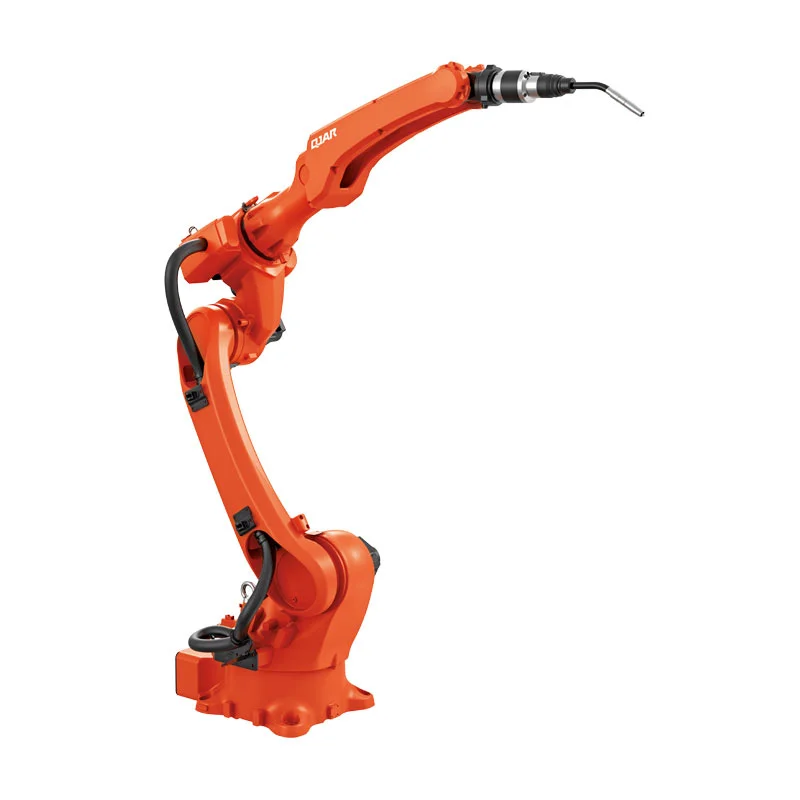
Perfection at Its Height
The notable precision of the QJR6-2000H is a result of its repeat positioning accuracy of ±0.08mm. By guaranteeing a high degree of accuracy with each weld, this level of precision effectively minimizes wastage and rework. Industries such as aerospace and automotive production, where even the tiniest deviation may compromise the product’s integrity, rely on such precision as an absolute necessity.
Designed to be Efficient and Adaptable
The QJR6-2000H’s design demonstrates a profound comprehension of the requirements of contemporary welding duties. Its structure for adjusting gear gaps improves the precision of joints, a critical aspect of complex welding projects. In addition to increasing the rigidity of the joint support, the hollow structure featuring a wrist U-shaped configuration of the robot improves its flexibility. This enables the robot to maneuver through confined spaces and perform accurate welds from almost any angle.
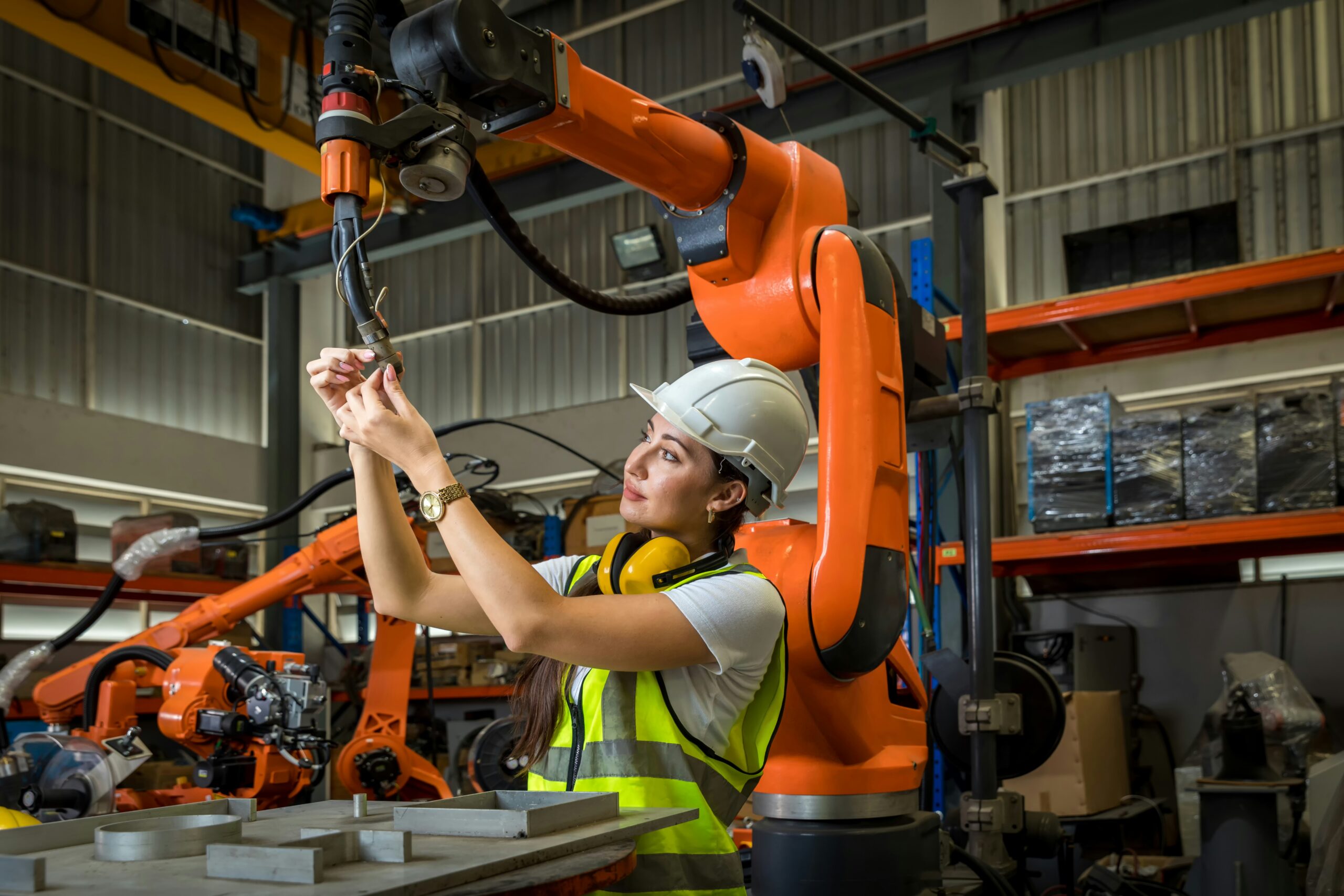
An additional domain in which the QJR6-2000H excels is noise reduction. A noise reduction structure covered by its unique patent substantially diminishes operational disturbance, thereby establishing a more pleasant working environment for personnel. Furthermore, the reduced endclearance and antishake optimization of this material contribute to enhanced operational rigidity and the minimization of control error, rendering it an optimal selection for applications that demand elevated standards of accuracy and steadiness.
Strength and Adaptability
Featuring a maximal arm span of 2014mm and a payload capacity of 6kg, the QJR6-2000H is not only robust but also adaptable. Its versatility enables it to perform welding duties on carbon steel, aluminum, and copper, making it an asset in a variety of industries. The unparalleled flexibility provided by its six-axis configuration and extensive motion range enables it to effortlessly implement intricate welding patterns.
Turntables Unwrapped for Welding
In tandem with the progress made in laser welding robots, welding turntables have experienced substantial advancements and have now become essential components in contemporary manufacturing configurations. In terms of welding turntable technology, the “Platform Two Axis Servo Positioner EVS-DWP-P-200/500/1000” is at the forefront, providing welding projects with unparalleled support and positioning versatility.
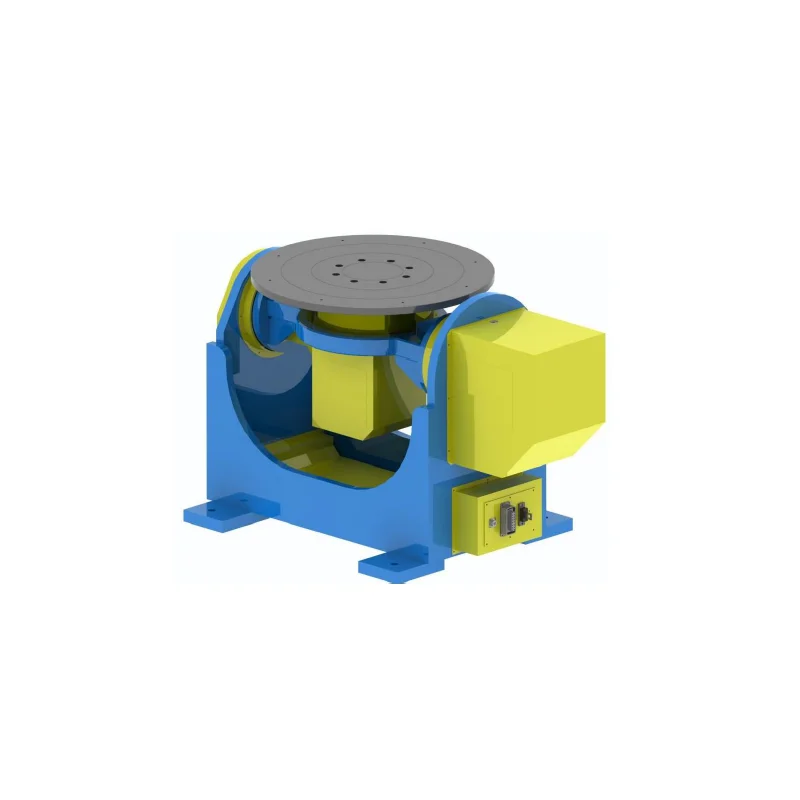
A Supporting Function with an Edge
Welding turntables ensure optimal welding positions and sequences by providing the necessary support and rotation for workpieces, thus becoming the unsung champions of the welding industry. This assistance is elevated to a higher degree with the EVS-DWP-P series, which provides precise control over the workpiece’s position—a critical factor in producing high-quality welding.
There are three variants of the EVS-DWP-P series, each with a distinct burden capacity: 200kg, 500kg, and 1000kg. With such a wide spectrum of capacities, a model is available to accommodate a variety of industrial applications, ranging from small components to large assemblies. The repeat positioning accuracy of the turntables, which varies between ±0.10mm and ±0.20mm, provides additional evidence of their significance in enabling accurate and consistent welding.
Achieving Technical Mastery to Maximize Productivity
The EVS-DWP-P series’ technical specifications serve as evidence of its sophisticated construction and functionalities. Turntables featuring rated gyration velocities of 70°/S and gyration angles of ±90° for axis 1 and ±360° for axis 2 provide the necessary adaptability and flexibility to operate efficiently in dynamic production settings. The incorporation of AC servo motors and RV precise reducers ensures exceptional positioning accuracy and gyration stability, thereby guaranteeing flawless execution of every weld.
The integrity and accuracy of the EVS-DWP-P series are evident in its construction. The gyration platform and welding structure are constructed entirely of high-quality components, ensuring their efficacy and durability over time. Furthermore, safety and usability are incorporated into the design of the protective cover and electrical control system, which transform the EVS-DWP-P series into a comprehensive solution for intricate welding endeavors.
Productivity Enhancement via Synergy
The incorporation of welding turntables and laser welding robots, such as the QJR6-2000H and EVS-DWP-P series, is the epitome of engineering synergy. This formidable amalgamation significantly enhances the effectiveness and excellence of welding operations, thereby demonstrating a quantum leap in manufacturing prowess.
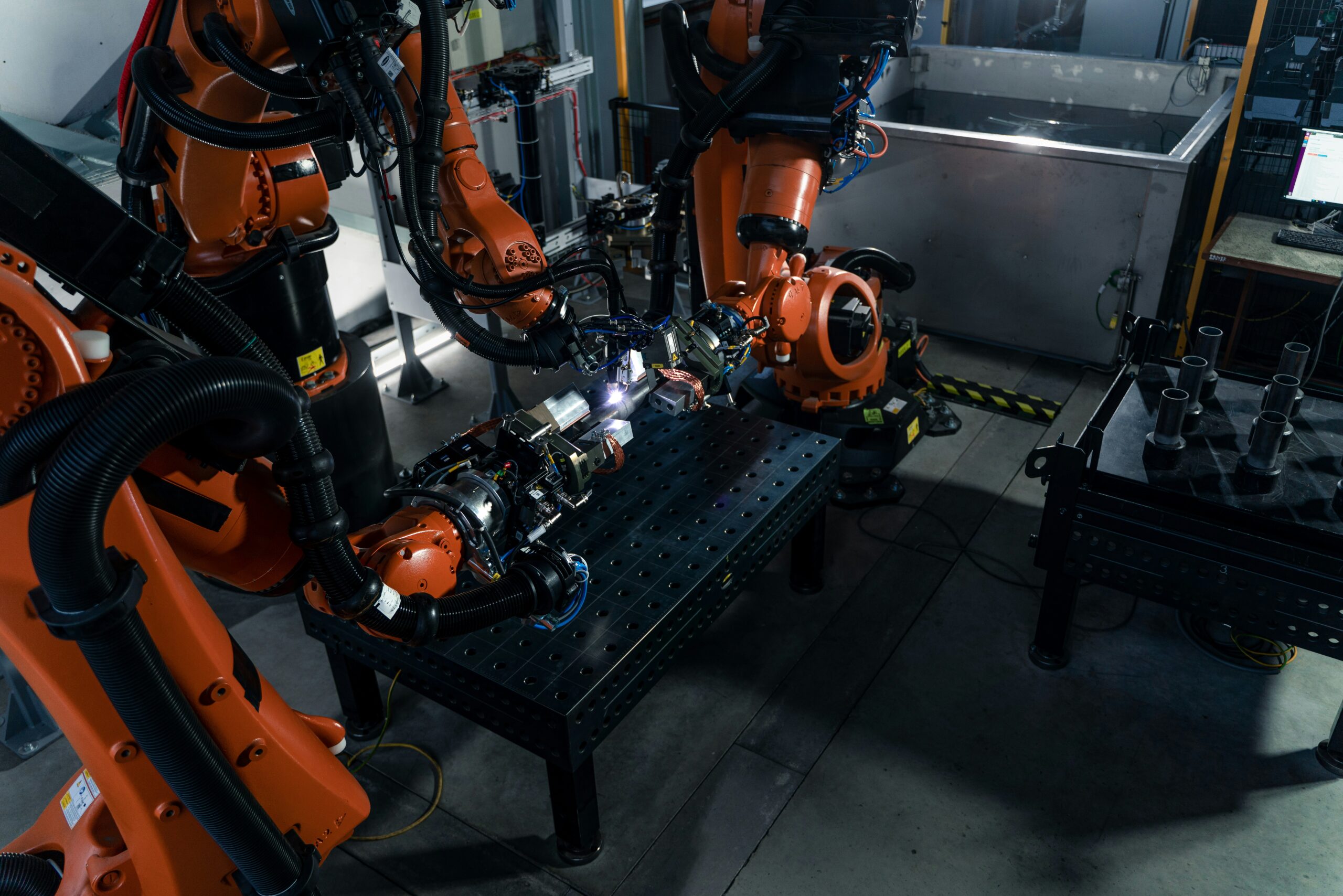
Optimised Welding Methods
The integration of welding turntables and laser welding robots produces a streamlined and exceptionally efficient welding procedure. The robotic system ensures accuracy and adaptability, whereas the gimbal provides ideal alignment and assistance, reducing the need for manual modifications and interventions. By ensuring that each weld is consistent and of the utmost quality, this symbiosis not only accelerates the welding process but also reduces waste and the necessity for rework.
Decreased Welding Duration and Improved Quality
By optimizing the workpiece’s position and motion, the coordination between the QJR6-2000H and EVS-DWP-P series substantially reduces welding time, enabling the laser welding robot to perform uninterrupted welding without superfluous interruptions. Furthermore, this integration improves the quality of the welded joints by maintaining the ideal welding distance and angle during the entire procedure, which produces welds that are more robust and consistent.
Adaptability to Diverse Projects
When combined with the load capacity and positioning accuracy of the EVS-DWP-P series, the QJR6-2000H’s adaptability and precision render this pair suitable for an extensive array of welding projects. With this synergy, manufacturers can confidently tackle a wide range of welding challenges, from small, intricate parts to large, hefty assemblies.
Applications in the Real World and Case Studies
The best way to demonstrate the practical advantages of integrating welding turntables and laser welding robots is through tangible implementations. An exemplary case study pertains to the incorporation of QJRH4-1 robots and single-axis positioners within the context of a welding endeavor for fitness equipment.
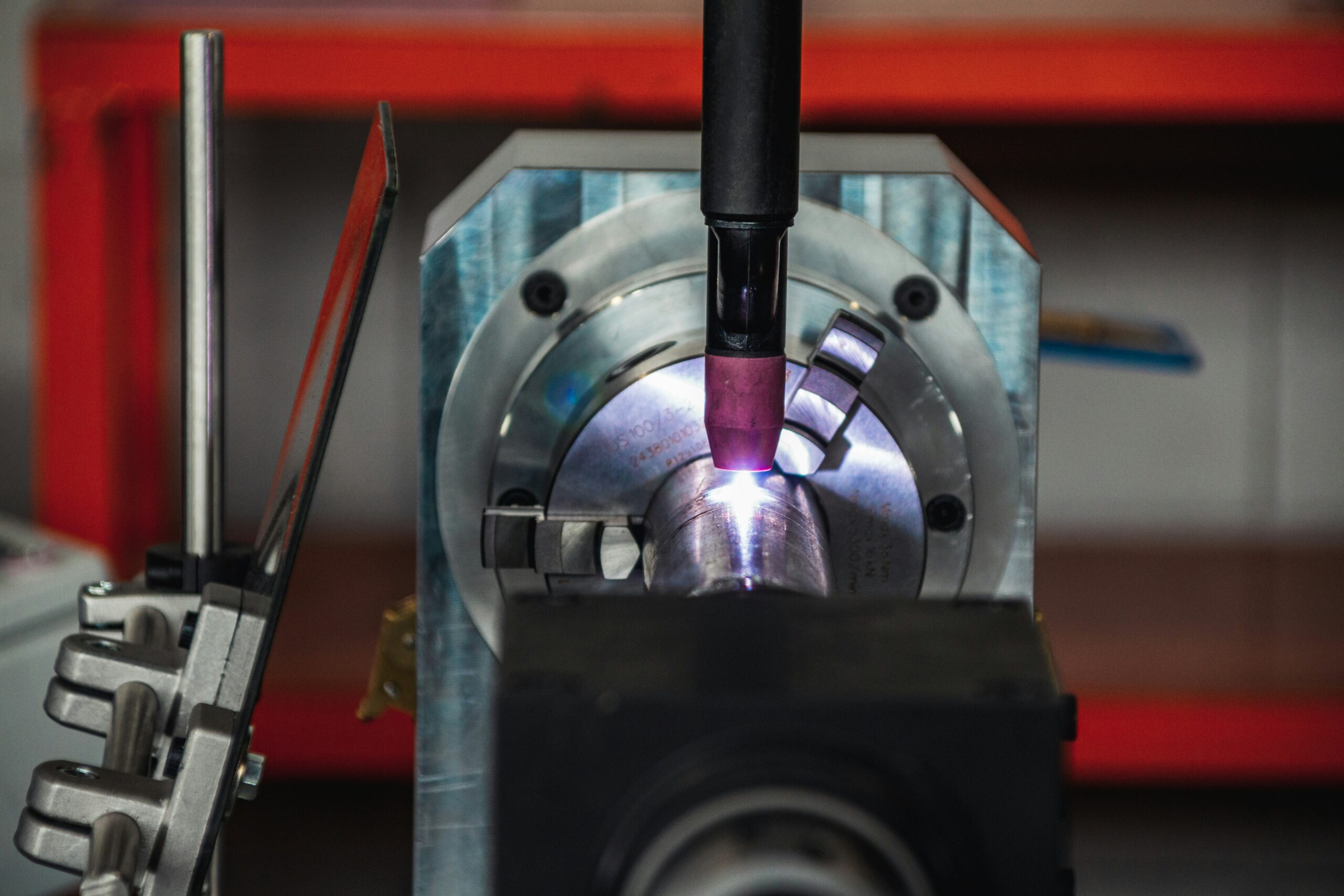
Welding of Fitness Equipment: A Case Study
The QJRH4-1 robots and single-axis positioners collaborated in this endeavor to significantly enhance the fitness equipment welding procedure. Not only did the coordinated motion of the robot and positioner result in substantial space savings within the manufacturing facility, but it also improved the efficiency and quality of the welding process. The production of compact, stable, and fluid weld seams, which are critical for the longevity and security of fitness equipment, was facilitated by the seamless interaction.
An additional notable aspect was the robot’s ease of use; it was capable of conducting automated welding with minimal need for human involvement. The implementation of this automation system guaranteed the production of consistently high-quality welds, thereby showcasing the considerable benefits that can be obtained by incorporating welding turntables and laser welding robots into manufacturing procedures.
Choosing Equipment That Suits Your Requirements
To fully capitalize on the advantages of this technology, it is vital to choose the proper welding turntable and laser welding robot. The following principles should serve as a guide for making an informed decision:
Compatibility and Requirements Evaluation
Ascertain Your Welding Requirements
It is imperative to consider both the materials to be welded and the complexity of the welds. This process will aid in the determination of the essential specifications required for the laser welding robot and welding turntable.
Assess the Load Capacity
Before beginning to weld, ensure that the weight and dimensions of the workpieces can be supported by the welding turntable. The versatility of the EVS-DWP-P series capacities allows it to be utilized for projects of varying proportions.

Reflect on Space Limitations
It is essential that the equipment’s physical dimensions are compatible with the available workspace without impeding operational activities.
Certification and Accreditation
The utmost importance is placed on quality and dependability when selecting equipment for welding applications. Choose laser welding robots and turntables that have undergone stringent certification and testing procedures, such as the CE test and the ISO 9001: 2015 certification for QJAR robots. These accreditations serve as proof that the equipment conforms to rigorous safety and quality standards on an international level.
Conclusion
The integration of welding turntables and laser welding robots constitutes a revolutionary phenomenon within the manufacturing sector, delivering exceptional levels of output, effectiveness, and excellence. Through meticulous technology selection and integration, manufacturers have the ability to gain access to untapped potential and maintain a competitive edge in a dynamic marketplace. The ongoing development and implementation of these synergistic solutions will undeniably have a significant impact on the trajectory of manufacturing in the years to come.
The present investigation into laser welding robots and welding turntables, with a particular focus on the QJR6-2000H and EVS-DWP-P series, emphasizes the substantial benefits that can be obtained by integrating these components to augment manufacturing productivity. By means of practical guidelines and real-world applications, it is evident that the strategic implementation of these technologies can result in significant enhancements to welding procedures, thereby establishing an entirely new benchmark within the industry.
